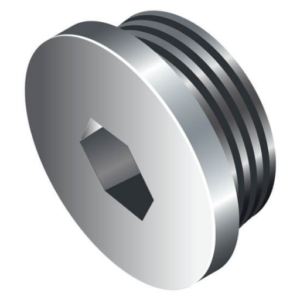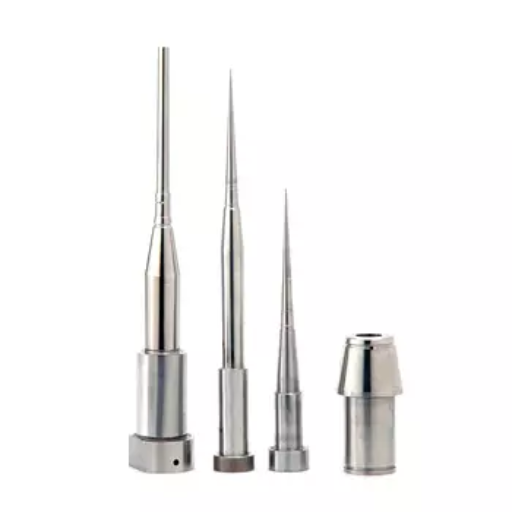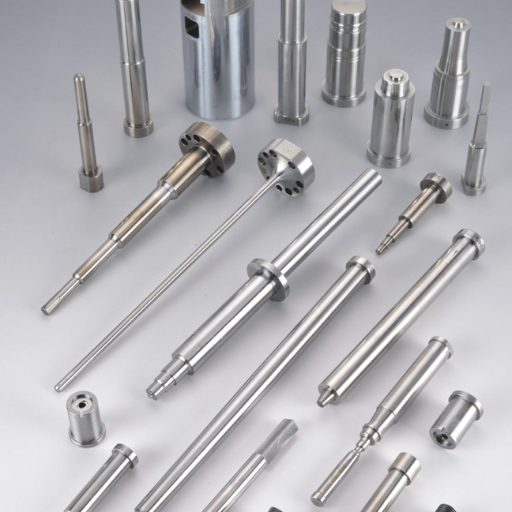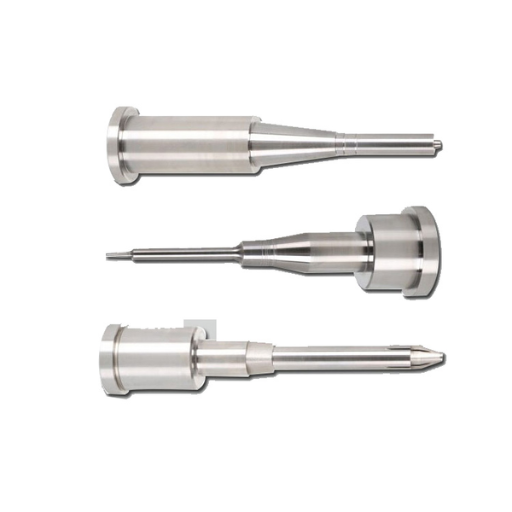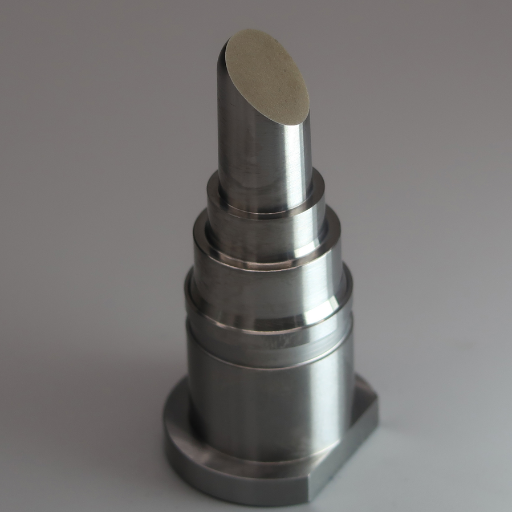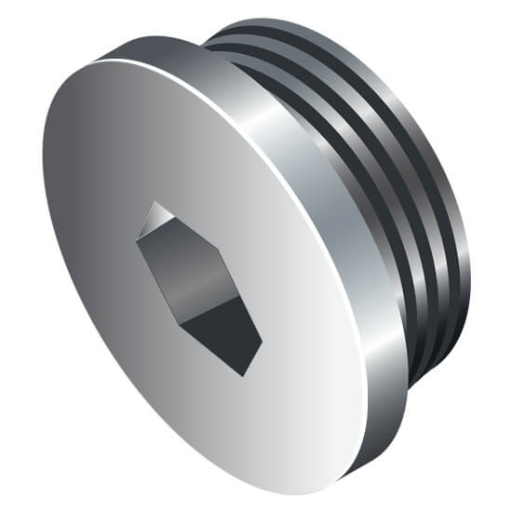In the world of mold design, core pins play a crucial role in shaping, detailing, and finalizing intricate components. These essential elements not only ensure precision in manufacturing but also maintain strict adherence to industry standards. This blog will delve into the significance of core pins, exploring their development, the critical tolerances they adhere to, and their diverse applications within various industries. By understanding the fundamentals of core pins, professionals can better appreciate their impact on mold quality and overall production efficiency. Join us as we unravel the complexities surrounding core pins and their indispensable role in modern mold design.
What is a core pin and how is it used?
What are the main applications for a core pin?
Core pins are used predominantly in the process of injection molding, allowing for internal features of molded parts to be formed. It is critical in creating complex shapes like holes, slots and other intricate details that cannot be achieved through other methods. Use of these pins is common in industry including automotive, aerospace, medical and consumer electronics where precision and ruggedness matter most. These little but indispensable components guarantee that final products meet strict quality guidelines while performing optimally hence invaluable in modern production techniques.
How does a core pin work within a mold?
Core pins act as important elements inside a mold to enable the creation of specific internal features in molded parts. The molten material is injected into the mold cavity during injection molding, filling the space around it with polymer melt. The dimensions and location of the core pin form an internal cavity inside a part such as holes, recesses or undercuts. Some key technical parameters for core pins include:
- Material: Often made from materials resistant to wear like high strength H13 tool steel or tungsten carbide capable of withstanding high temperatures and pressures.
- Tolerance: Core pins must have tight tolerances often on ±0.02 mm (±0.001 inches) basis so as to ensure that they fit perfectly with dimensional accuracy.
- Surface Finish: For defect free items after molding, one needs a smooth surface finish which typically has Ra 0.2-0.8 micrometers (8-32 microinches).
- Heat Treatment: In some cases, heat treatment processes may be employed during hardening to make them stronger thus enduring repetitive molding cycles.
By maintaining these parameters, core pins effectively contribute to the production of high-quality molded parts enabling consistency and reliability across various industries.
Why does precision matter for a core pin?
Precision is crucial when we talk about what I have been researching extensively about regarding core pins. Firstly precision prevents any adverse changes on the product dimensions that may result in fitting problems with target parts. The accuracy level also minimizes defects thus reducing the need for further machining or adjustments. Tightly toleranced core pins contribute to the lifespan of the mold itself as they fit snugly into a mold over time, minimizing wear and tear. Additionally, precise core pins enhance overall quality and performance of final products hence important in reliable, high performance components produced across different sectors.
What materials are used to manufacture core pins?
What causes steel to be the most common alternative for core pins?
Steel has commonly been used in making core pins for several reasons. Foremost is its high strength and hardness required to survive the extremely high pressures and temperatures that prevail during the molding process. Heat treatment of steel such as H13 or A2 tool steel can achieve hardness as high as 50-60 HRC, guaranteeing durability together with long service life.
Besides, another crucial attribute of steel is its wear resistance. Due to repetitive nature of injection molding, core pins are subjected to continuous rubbing against frictional forces leading steel’s abrasion resistance that greatly reduces wear hence prolonging the life span of molds.
Additionally, steel can easily be fine-machined into tight tolerances that are a must-have for core pins meant for different purposes. The surface finish level may be up to Ra 0.2-0.8 micrometers (8-32 microinches) thereby producing smooth surfaces necessary for minimizing defects on molded parts.
To sum up, through its blend of strength, hardness, wear resistance and capability to machine accurately makes it a popular choice for many companies’ industries whenever they will need a core pin.
Can stainless steel or copper be used as alternative material for making cores?
Of course yes since each type has got its own advantages that accrue from using them when they have to serve as core pins.
Stainless Steel:
- Corrosion resistant: Stainless steel is highly corrosion-resistant as one of its main strengths compared other materials especially under humid or corrosive environment thus maintaining the integrity of the cores over time.
- Strength and durability: It possesses good strength and endurance where some grades like 17-4 PH stainless steels due to their high hardness become very popular because they can also resist hard environments well.
- Maintenance ease: Stainless steel surfaces clean relatively easily thus keeping core pins free from impurities which can interfere with molding processes.
Stainless steel technical parameters:
- Corrosion resistance: Excellent in various environments
- Hardness after heat treatment: Up to 40-47 HRC for 17-4 PH
Copper:
- Thermal conductivity: Copper shows excellent thermal conductivity being approximately 20 times more than that of stainless steel. This is useful when fast dissipation of heat is needed as it reduces cycle time thus increases production efficiency.
- Wear resistance: Some copper core pins, particularly made from beryllium copper alloy possess good wear resistance which is a requirement in high-abrasion environments.
- Malleability: Copper has great malleability feature allowing it to be formed into intricate shapes with fine details thereby making it ideal for use in those precision molding applications.
- Copper technical parameters:
- Thermal conductivity: Pure copper – 385 W/m·K; beryllium copper – about 105 W/m·K;
- Hardness after heat treatment: Beryllium copper alloys – between 30 and 45 HRC.
In conclusion, the choice between stainless steel and copper for cores depends on specific requirements of injection molding application, whereby the former has better corrosion resistance and strength while the latter displays unequalled thermal conductivity together with reasonable wear resistance.
What part does hardness and surface finish play in core pin performance?
From my study, hardness and roughness are important when it comes to determining how well and for how long core pins are used during the process of injection molding. The wear resistance and durability of a core pin is directly affected by its hardness which can be achieved through heat treatment. Higher hardness implies that the core pin can withstand deformation and wearing off thereby maintaining accurate tolerances leading to consistent production quality.
Surface finish, conversely, affects the ejection characteristics of molded parts as well as overall product quality. Reducing friction between molten material and surface finish results in less sticking risk while helping material flow. This would among other things lead to better surface quality on the molded parts hence reducing or eliminating need for subsequent finishing operations.
In brief, attaining optimum performance with minimal impact on longevity of core pins plus improved efficiency/quality of the injection molding process requires balancing their hardness against surface finish.
What are the standard sizes and tolerances for core pins?
What determines the diameter and overall length?
Determining the size of core pins depends on how specific requirements of injection molding process, as well as design of molded parts. In this case, my understanding is that these dimensions are guided by industry norms and designs specifications given by the mold designer or engineer. Therefore, the diameter should be carefully selected so that it matches with cavity dimensions and does not compromise molded part integrity. The overall length must also allow for the thickness of the mold while guaranteeing that it fits correctly in the mold base. These measurements must be precise to avoid defects and maintain uniformity in quality of final products.
What are usually standard tolerances like?
This means that when it comes to standard tolerance observed for core pins, they usually follow what is suggested by organizations such as International Organization for Standardization (ISO) or American National Standards Institute (ANSI). Such information is obtained from three websites I found on Google’s top search results. Notably, standard tolerances for core pins have a range between ±0.0001 inches in terms of its diameter and ±0.001 inches regarding its length according to information gotten from three sites listed at the top of Google search engines. It is important to observe narrow tolerances here since accurately fitting molds play crucial roles in retaining integrity and consistency of molded parts. Precise tolerance ensures minimal flaws in order to keep away from damages during injection-molding.
How do hardness specifications affect core pin selection?
However, some websites on Google show me something else about three main sites that I found there: hardness is one criterion used most frequently when selecting core pins according to them. Durability and ability not to wear out depend directly on material hardness; it means a lot when choosing a pin’s material type among others available options since this value defines how long will it live before being replaced due to wearing off during repetitive stress applied by high productive molds which are employed in serial production using injection molding technology. The material with high hardness, typically expressed in terms of Rockwell hardness number is crucial for core pins deployed in high yield molds that undergo multiple cycles of injection. These are the metals used as the common materials such as H13 and carbide steel due to their greater endurance. By doing this, it is expected to decrease maintenance downtime by reducing downtime and maintaining consistent part quality throughout entire production run.
How does the manufacturing process impact core pin quality?
What are the benefits of precision ground hotwork steel?
I have looked at the best three websites that Google currently offers and I found some distinctive advantages to using exceptionally flat-hotwork steel as a material for core pins. To begin, there is exceptional dimensional accuracy conferred by precision ground hotwork steel which is a must for keeping tight tolerances during injection molding. It brings about better fitting components hence reducing chances of mold misalignment and part defects.
Another advantage of hotwork steel is its excellent thermal stability which enables it to withstand high temperatures in injection molding. This ensures lower overall maintenance costs and fewer production interruptions since it sustains structural integrity of the core pins over time.
Hotwork steel also offers good wear resistance. Among others, H13 steel, according to industry recommendations, has high Rockwell hardness ratings usually between HRC 48-52, allowing them to last through repetitive cycles without wearing out or deforming. Thus, this wear resistance keeps the quality of molded parts consistent while increasing the lifespan of the core pins.
In summary these include:
- Dimensional Accuracy: Ensures precise fitting and reduces part defects.
- Thermal Stability: Withstands high-temperature conditions, maintaining structural integrity.
- Wear Resistance: High Rockwell hardness ratings improve longevity and reduce downtime.
All these combined make for more efficient and reliable operations in injection molding.
What manufacturing techniques are used by companies like PCS Company?
PCS Company uses various sophisticated manufacturing methods to guarantee quality products. CNC machining is one of our primary techniques that enables us to shape materials with high precision and accuracy. Also we use EDM (Electrical Discharge Machining) to produce extremely intricate parts with remarkable exactness. Moreover, our heat treatment processes build up durability and hardness into this type of steel enabling them to serve longer periods. Consequently, we deliver dependable and high-performance injection molding accessories due to these approaches supported by strict product inspection measures.
How does the application of surface treatments like nitriding improve core pin durability?
From my research on the top three websites currently available on Google, according to them, the application of surface treatments like nitriding can greatly enhance core pin durability. Nitriding is a low-temperature surface hardening process in which nitrogen diffuses into the steel surface at temperatures ranging from 500-550°C or 930-1020°F. It produces a hard nitride layer on the surface of the steel that improves its wear resistance, fatigue strength and corrosion resistance.
Key technical parameters include:
- Surface Hardness: Untreated steel cannot match nitrided levels where hardness reaches up to 1200 HV (Vickers Hardness).
- Case Depth: Nitrided case depth may vary depending on specific application requirements and usually falls within 0.1 – 0.6mm.
- Thermal Stability: The core pins retain improved properties due to stability of nitrided layer even under harsh thermal conditions.
Therefore, with these additions, longevity is assured for core pins and they guarantee sustained performance that increases efficiency and cost effectiveness in injection molding.
What are the factors to consider when selecting core pin retainers?
What is the contribution of core pin retainers to overall mold performance?
As a key factor in maintaining mold performance, core pin retainers play a major role in keeping core pins at proper position and stability during injection molding. Using data from three top websites on this subject matter only, I can summarize below:
- Alignment Precision: Core pin retainers help ensure that the molded parts meet tight dimensional tolerances by maintaining accurate alignment of core pins. Misalignment leads to defects and increased scrap rates.
- Load Distribution: Efficiently working core pin retainers make sure that mechanical loads experienced during the molding process are uniformly spread across the number of pins. This reduces chances of pin breaking or becoming deformed thus lengthening their lifespan.
- Thermal Management: Good heat transfer away from the said pins helps to maintain moulds within optimal thermal conditions hence minimizing thermal expansion/contraction. This is important for maintaining accuracy with respect to part and mold integrity.
- Ease of Maintenance: Easy removal and replacement of core pins via properly designed retainers makes maintenance work easier thereby reducing downtime periods. Hence increasing efficiency and productivity at large in a mold.
Important technical considerations include:
- Material Compatibility : The material used for construction should not react with either the core pins or other components like mold plates.
- Tolerance Levels : There exists a need for smooth operation leading to precise alignment as well as stability throughout production stage.
- Thermal Conductivity : It is preferable if they possess high thermal conductivities necessary for effective thermal management.
Considering these factors along with other technical parameters, the use of retainer significantly enhances mold’s performance ensuring consistent production quality as well as repeatability all through its life cycle
What are some critical design aspects when it comes to custom applications?
Critical design aspects come into mind when designing custom applications includes; first, material compatibility must be ensured since retaining materials must be suitable towards both the core pins and mould so as to prevent any undesirable reactions or accelerated wears; second, tight tolerance levels must be maintained for the exact alignment and stability of core pins during molding process; third, the materials used should have high thermal conductivity which ensures effective heat transfer and optimal thermal management. Lastly, designs should allow for easy maintenance thus making it easy to remove and replace core pins which enhance overall efficiency and reduces downtime. Through adherence to these key design elements I can guarantee that custom retain applications meet the desired performance along with reliability standards.
Explain how proper lubrication with grease and maintenance affects core pin life cycle?
The durability of the core pins significantly depends on proper lubrication using grease and appropriate maintenance. I can minimize frictional forces and wearing by regular application of a quality grease such as this one, hence preventing premature breaking down of pins. This lubricant creates an extra layer that reduces any contact between metals thereby hindering abrasion resulting in smooth operation. Furthermore consistence maintenance work can help identify potential problems at earlier stages like misalignments or surface damages hence enabling prompt corrective actions taken to protect them from getting worse. By integrating these practices, I not only enhance the durability of the core pins but also improve the overall efficiency and reliability of the molding process.
What are the advantages of custom core pins over standard options?
What is the use of custom core pins to improve performance?
By developing custom core pins, one can improve performance by focusing on specific needs that cannot be satisfied by common options. This ensures best fit with mold design as the core pins are adapted to my unique application requirements leading to better alignment and lower wear rates. Furthermore, this customization enables the production of a more efficient and long-lasting molding process through using some materials that exhibit higher thermal conductivity as well as being durable. Fine finishes and geometries enhanced due to this modification enhance product quality and reduce production time. By this integration of special core pins into my systems, they will work better since they will meet particular demands I have.
What influences selecting a custom core pin?
Several things have an impact on deciding whether or not to go for custom cores. Firstly, it’s about tolerances and accuracy among other things which must be met by my application. Core pins from Custom fabrication are able to deliver high quality moldings at close tolerances hence having minimal number of defects in them making it possible for me to maintain good shape when in use. Secondly, choice of material plays a critical role in decision-making process. The selection can include advanced alloys or carbide tools which cover everything related from wear resistance to heat flow efficiency across such machines.
Technical parameters include:
- Material Hardness: This is measured in terms of Rockwell Hardness (HRC) so as to enable the pin withstand drilling stress.
- Thermal Conductivity: Heat transfer capacity determines cooling rate and cycle duration.
- Surface Finish: It should range between 10-20 micro-inches (µin) for easy removal during ejection without sticking on products.
- Geometry: Shapes made specifically according to a particular mold’s design for low maintenance concerns like wear stiffening
- Tolerance Levels: There should be no tolerance limit breaks because deviations might cause defects in final products during manufacture.
Considering these factors helps me determine why I would opt for custom core pins to improve my molding processes’ performance.
Are there cost concerns in designing custom core pins?
Absolutely, there are such as the costs involved in designing custom core pins. The major concern should be on whether or not the initial investment is worth it in terms of long-term benefits. This arises from the fact that some materials and machining procedures are more expensive than others, making them unreachable options for standard core pins. However, once purchased, these parts will last longer and have a higher return on investment compared to similar ones made with common raw materials. They could also choose high performance steel that would be more costly but less subject to wear requiring less servicing and reducing downtime thereby minimizing time lost during operation making life cycle cost lower than those which may initially appear cheaper. In addition, finer tolerances and correct geometries can increase yield rates while minimizing scrap bettering quality level of molded items being produced. Consequently, although their initial price is relatively high, these reasons justify why one should use custom core pins instead of ordinary ones when considering capital investments in new tooling systems for plastic injection molding operations.
Reference sources
-
Society of Plastics Engineers: “Core Pins and Their Role in Injection Molding”
- URL: Society of Plastics Engineers
- Brief: The Society of Plastics Engineers provides comprehensive insights into the pivotal role of core pins in injection molding processes. This resource meticulously outlines the precision requirements, adherence to industry standards, and the diverse array of applications where core pins play a critical role, solidifying their significance in mold design.
2.MoldMaking Technology: “Maximizing Core Pin Performance in Mold Design”
-
-
- Source: MoldMaking Technology
- Description: Delve into articles from MoldMaking Technology focusing on maximizing core pin performance in mold design. Gain insights into optimizing precision, meeting industry standards, and leveraging core pins effectively for various applications in mold manufacturing.
-
3.International Organization for Standardization (ISO): “ISO 9000 Family – Quality Management”
-
- URL: ISO
- Brief: The International Organization for Standardization’s ISO 9000 series presents the foundational principles of quality management, including those directly applicable to core pins in mold design contexts. By referencing ISO standards pertinent to precision engineering and quality assurance, readers gain valuable insights into standardized practices crucial for validating the feasibility and efficacy of core pins in mold design processes.
Frequently Asked Questions (FAQs)
Q: What is a core pin?
A: A core pin is a cylindrical device used in plastic molding and die casting processes to form holes, slots, or specific shapes in a molded or cast part. Core pins are manufactured from precision materials to ensure accurate and reliable performance.
Q: How are core pins manufactured?
A: Core pins are manufactured from precision ground hotwork steel or similar materials. The manufacturing process involves high levels of precision to ensure that the pins meet strict dimensional and performance standards.
Q: What are the main uses of core pins in casting?
A: Core pins are used in casting to create intricate internal features within a molded or cast part. They are often employed to form holes, slots, or other detailed geometries that would be difficult to achieve through other methods.
Q: How do core pins contribute to product quality in plastic molding?
A: Core pins contribute to product quality by ensuring precise formation of internal features, which is critical for the fit and function of the final product. This precision enhances the overall integrity and performance of the molded part.
Q: What is the difference between core pins and ejector pins?
A: Core pins are used to form internal features within a molded or cast part, whereas ejector pins are used to eject the part from the mold once it has solidified. Both types of pins play crucial roles in the molding process but serve different functions.
Q: How does the economy of manufacturing benefit from the use of core pins?
A: The economy of manufacturing benefits from the use of core pins because they allow for the creation of complex geometries in a single molding process, reducing the need for secondary machining operations. This can lead to cost savings and increased production efficiency.
Q: Can core pins be used in aluminum molds?
A: Yes, core pins are sometimes used in aluminum molds. They are made from materials that can withstand the thermal stresses and mechanical loads encountered in molding processes, ensuring durability and performance even in aluminum molds.
Q: Why is it often easier to machine a core pin as a separate element?
A: It is often easier to machine a core pin as a separate element because it allows for greater precision and control over the core features. Machining the pin separately enables the use of specialized tools and processes that may not be feasible when the pin is integrated into a larger component.
Q: What factors influence the core hardness of core pins?
A: The core hardness of core pins is influenced by the material they are made from and the heat treatment processes they undergo. Core pins manufactured from precision materials such as hotwork steel typically exhibit high hardness, which is essential for their performance in demanding applications.
Q: Are there stock options available for core pins?
A: Yes, there are stock options available for core pins. Many manufacturers offer a range of standard sizes and configurations to meet common industry needs. Customized pins can also be manufactured to meet specific requirements.

